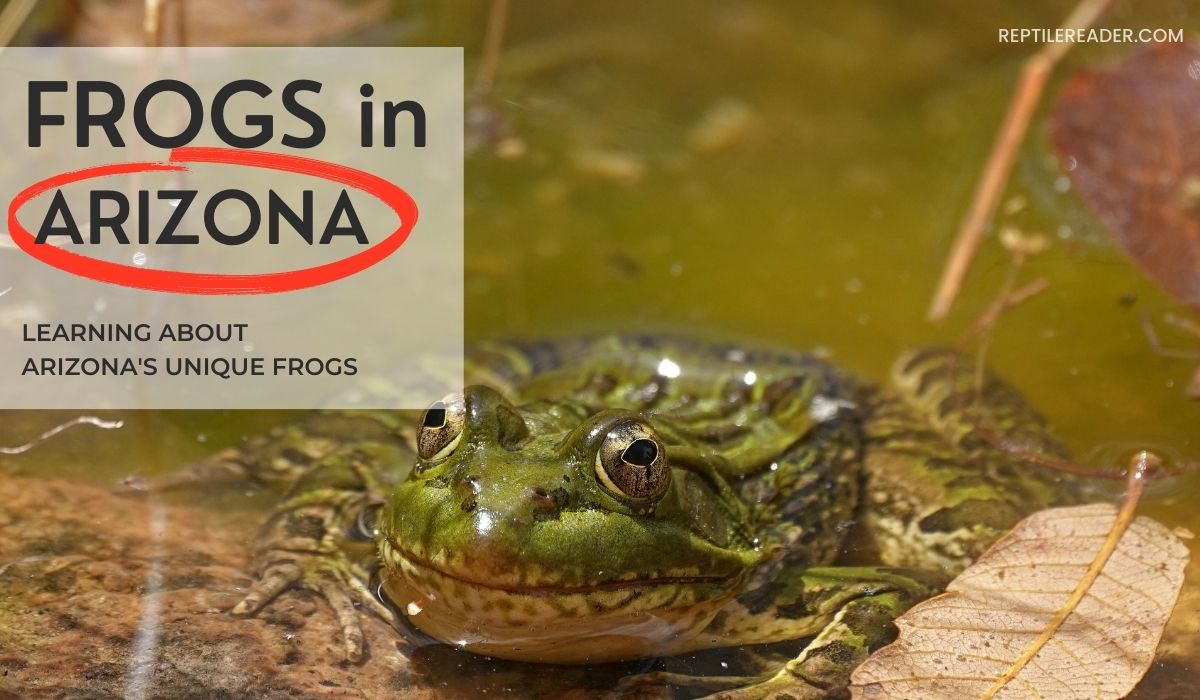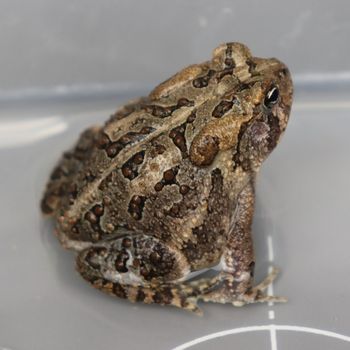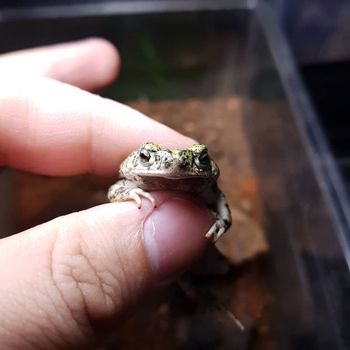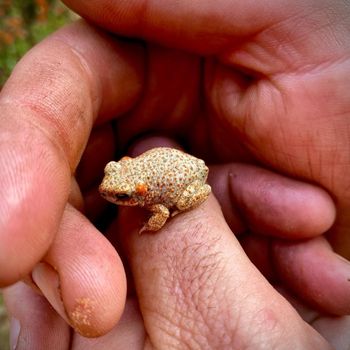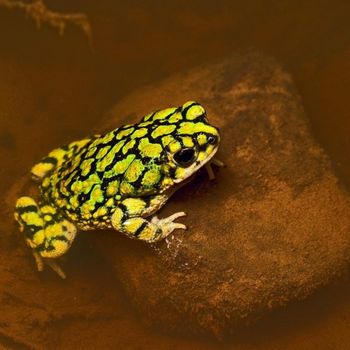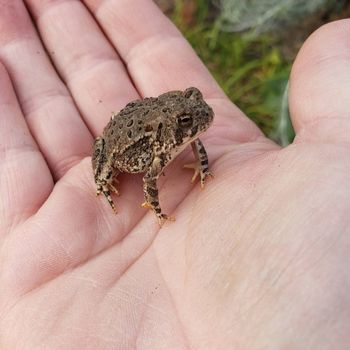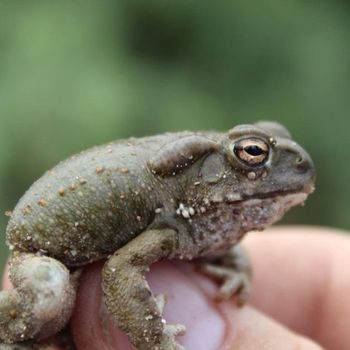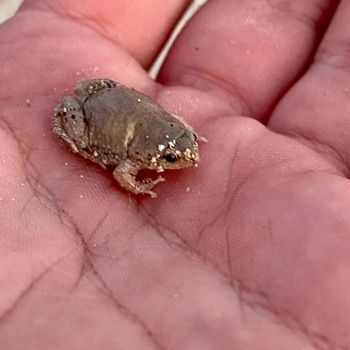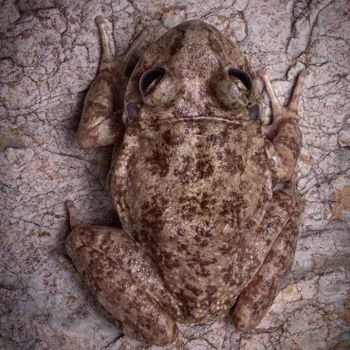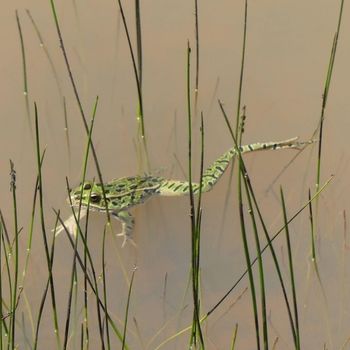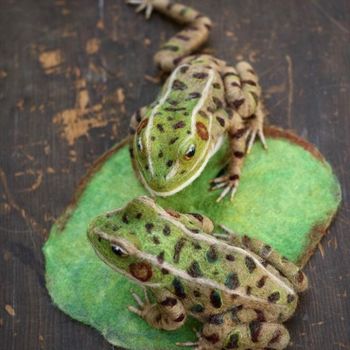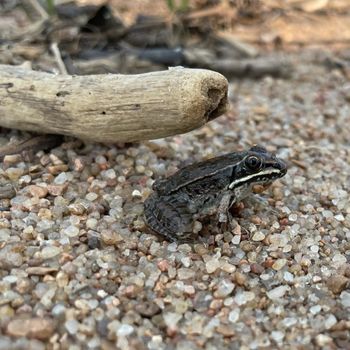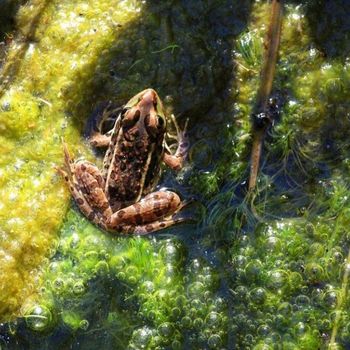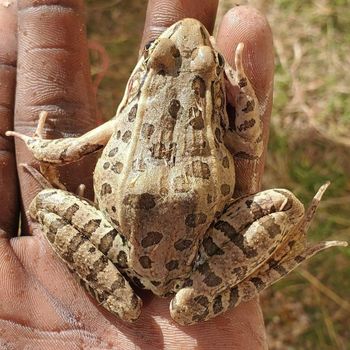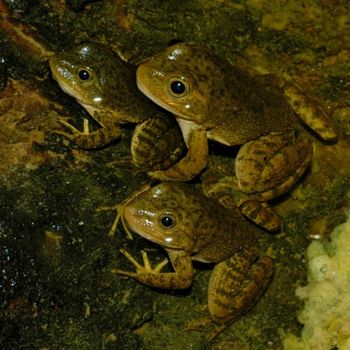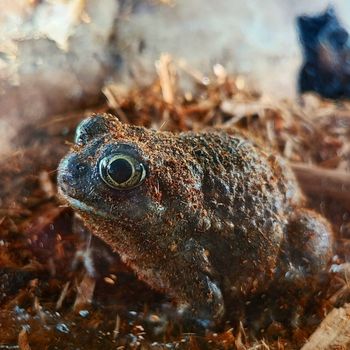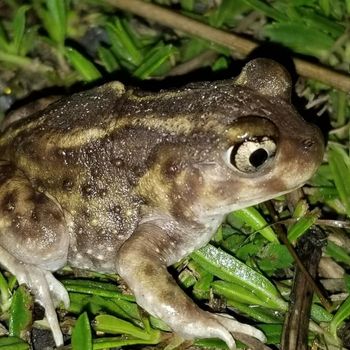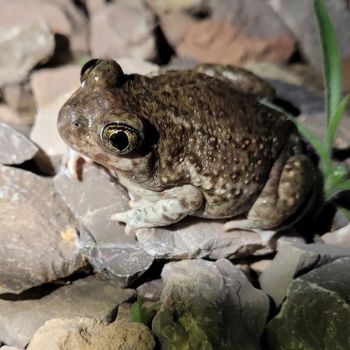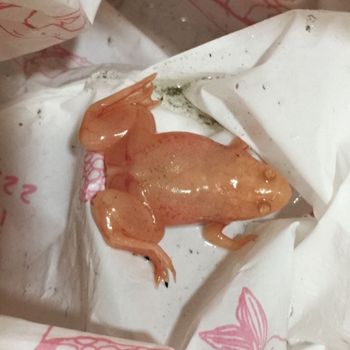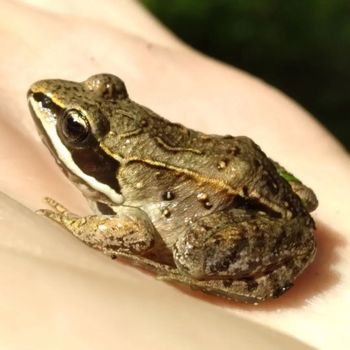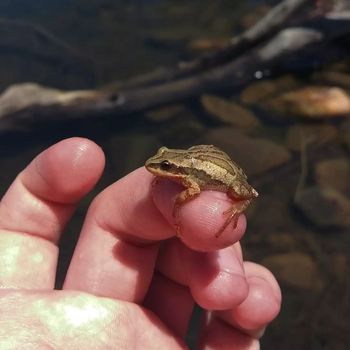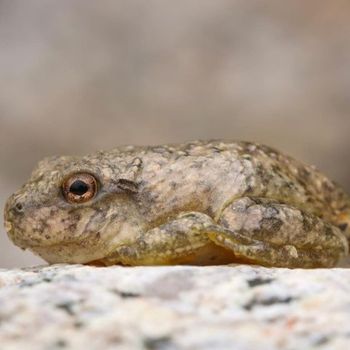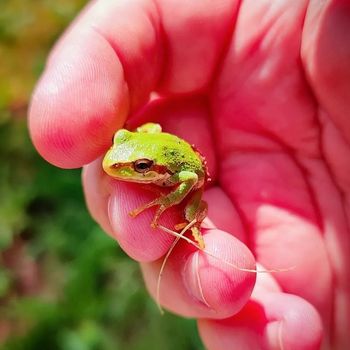Frogs in Arizona: Learning About Arizona’s Unique Frogs
Well, hello there fellow frog enthusiasts! We know Arizona isn’t typically the first place that comes to mind when thinking about these fascinating amphibians, but you’re in for a surprise. In fact, the Grand Canyon State is home to a whopping 28 different frog species!
These charming little creatures can be found in various habitats across Arizona, from the wetlands of the south to the forested mountains of the north. So, grab your binoculars, wading boots, and field guide, as we hop into a world full of wonder and croaking delights.
Whether you’re a seasoned herpetologist, an amateur naturalist, or just someone who loves a new adventure, we invite you to join us on this exciting quest to discover the 28 diverse frog species that call Arizona home. Let’s leap into action!
| # | Name | Details | Image |
| 1 | Arizona Toad (Anaxyrus microscaphus ) |
| 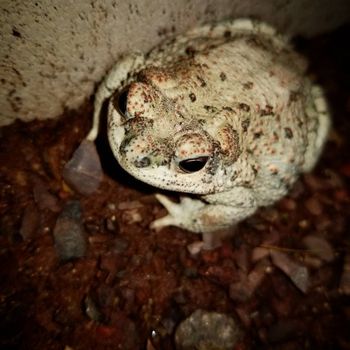 |
| 2 | Great Plains Toad (Anaxyrus cognatus) |
| 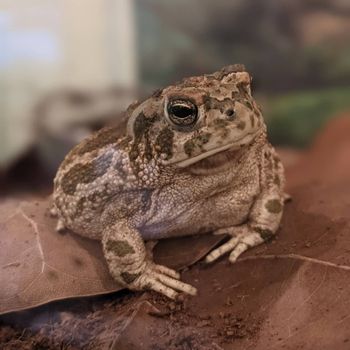 |
| 3 | Western Green Toad (Bufotes viridis) |
|  |
| 4 | Red-spotted Toad (Anaxyrus punctatus) |
| 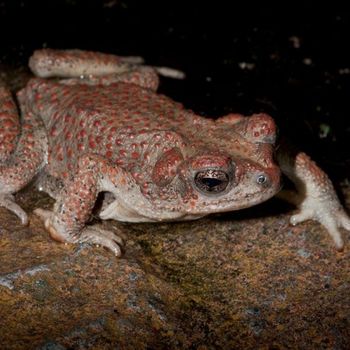 |
| 5 | Sonoran Green Toad (Anaxyrus retiformis) |
|  |
| 6 | Woodhouse’s Toad (Anaxyrus woodhousii) |
|  |
| 7 | Sonoran Desert Toad (Incilius alvarius) |
| 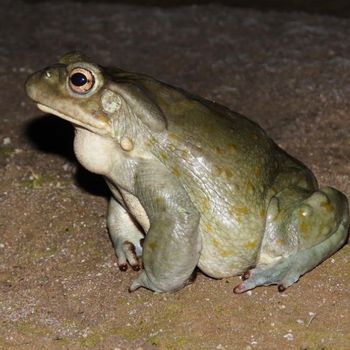 |
| 8 | Western Narrow-mouthed Toad (Gastrophryne olivacea) |
| 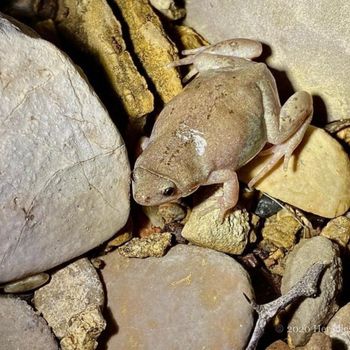 |
| 9 | American Bullfrog (Lithobates catesbeianus) |
| 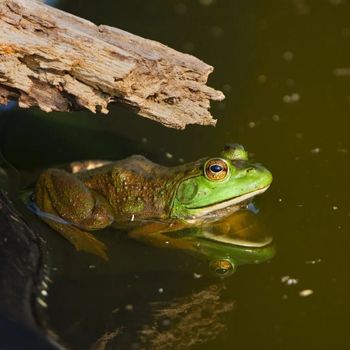 |
| 10 | Barking Frog (Eleutherodactylus augusti) |
| 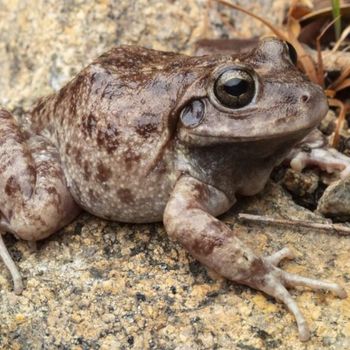 |
| 11 | Chiricahua Leopard Frog (Lithobates chiricahuensis) |
|  |
| 12 | Lowland Leopard Frog (Lithobates yavapaiensis) |
| 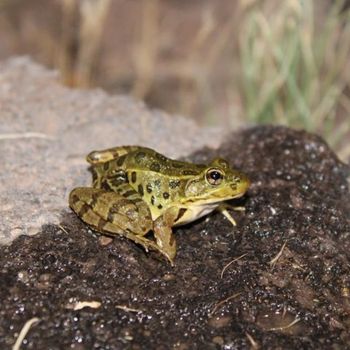 |
| 13 | Northern Leopard Frog (Rana pipiens) |
| 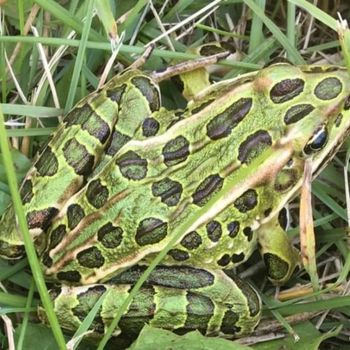 |
| 14 | Plains Leopard Frog (Lithobates blairi) |
| 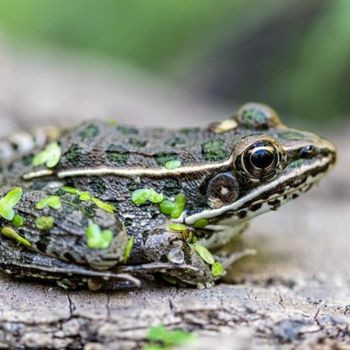 |
| 15 | Relict Leopard Frog (Lithobates onca) |
| 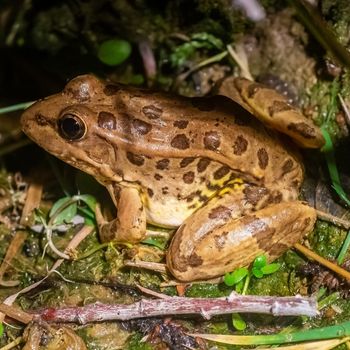 |
| 16 | Rio Grande Leopard Frog (Lithobates berlandieri) |
| 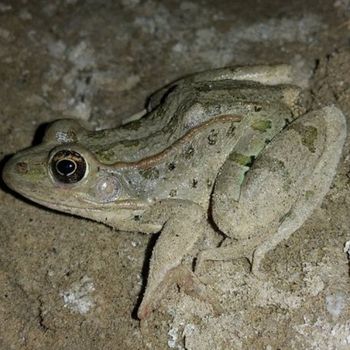 |
| 17 | Tarahumara Frog (Rana tarahumarae) |
| 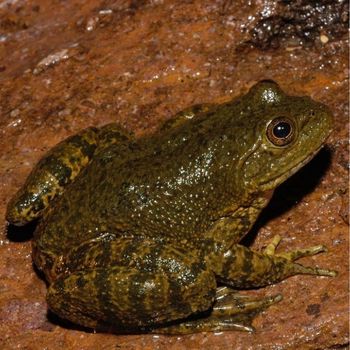 |
| 18 | Couch’s Spadefoot Toad (Scaphiopus couchii) |
| 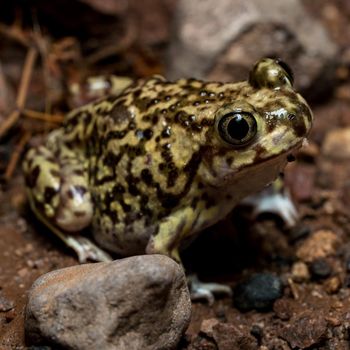 |
| 19 | Great Basin Spadefoot Toad (Spea intermontana) |
| 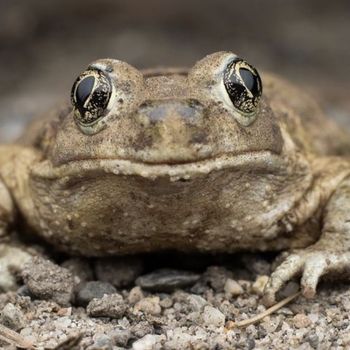 |
| 20 | Mexican Spadefoot Toad (Spea multiplicata) |
| 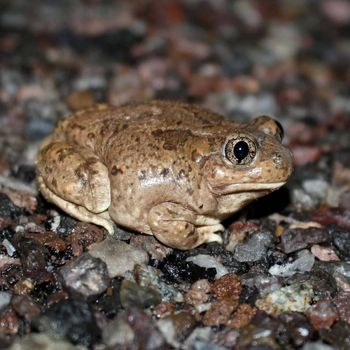 |
| 21 | Plains Spadefoot Toad (Spea bombifrons) |
| 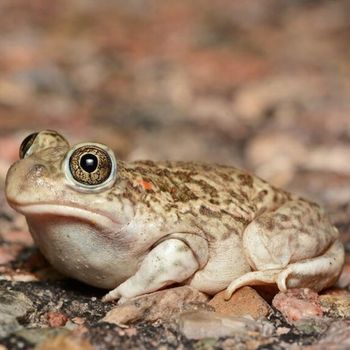 |
| 22 | African Clawed Frog (Xenopus laevis) |
| 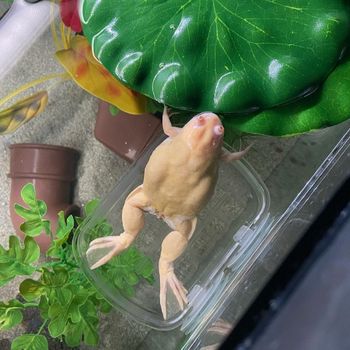 |
| 23 | Boreal Chorus Frog (Pseudacris maculata) |
| 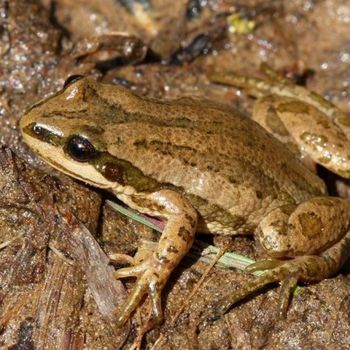 |
| 24 | Western Chorus Frog (Pseudacris triseriata) |
| 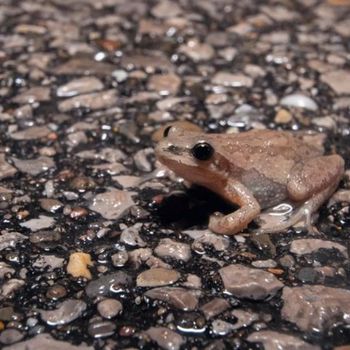 |
| 25 | Canyon Tree Frog (Hyla arenicolor) |
| 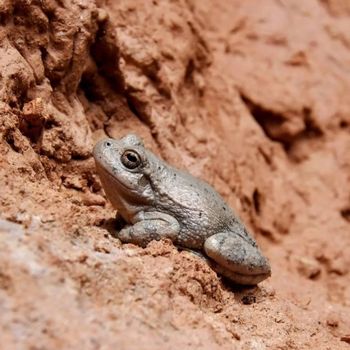 |
| 26 | Lowland Burrowing Tree Frog (Smilisca dentata) |
| 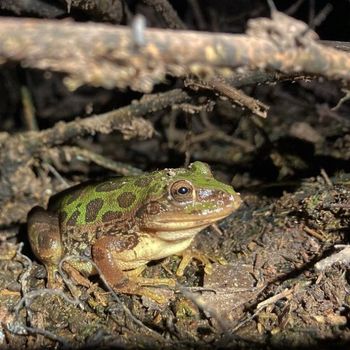 |
| 27 | Mountain Tree Frog (Philoria kundagungan) |
| 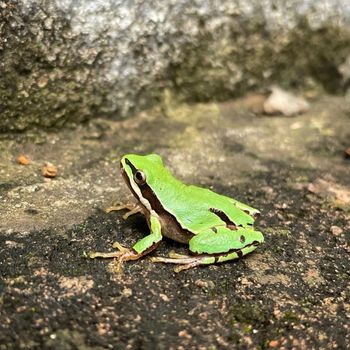 |
| 28 | Pacific Tree Frog (Pseudacris regilla) |
| 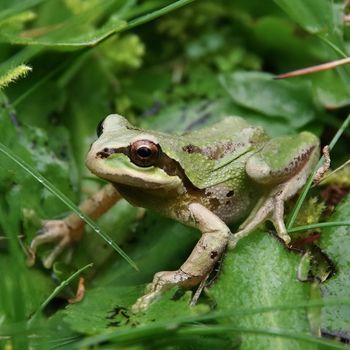 |
Are Any Frog Species Found in Both Arizona and Texas?
Both Arizona and Texas host a variety of amphibian species, including some frogs that are found in both states. While there are regional differences, certain frogs native to texas, such as the Couch’s spadefoot, can also be found in parts of Arizona due to their adaptability to desert environments.
How Do Arizona’s Unique Frogs Compare with Tennessee’s Terrific Frog Varieties?
Arizona’s unique frogs, adapted to arid deserts and mountainous regions, contrast with Tennessee’s lush, wetter habitats. While Arizona’s amphibians excel in survival strategies for extreme dryness, tennessee’s diverse frog species thrive in rich wetlands, showcasing a broader variety adapted to different ecosystems, from rivers to forests. Both regions highlight amphibious resilience.
28 Frog Species You Can Find in Arizona
Get ready to dive deep into the lives of 28 incredible frog species that call Arizona their home, showcasing their unique adaptations and remarkable behaviors. From the desert-dwelling Couch’s spadefoot to the mountain-loving canyon tree frog, these amphibians have evolved to thrive in diverse environments across the state, from dry deserts to lush riparian areas. Their impressive range of adaptations includes burrowing to escape the heat and developing specialized skin to retain moisture in arid climates. Interestingly, many of these species share similar traits with frogs in New Mexico, as both states host a variety of amphibians adapted to life in the Southwest’s harsh and variable conditions.
1. Arizona Toad
- Scientific Name: Anaxyrus microscaphus
- Common Name: Arizona toad
- Size: 1.5-3.5 inches (3.8-8.9 cm)
- Color & Pattern: Light brown or gray with darker spots or patches
- Natural Habitat: Riparian areas, rivers, streams
- Geographic Range: Southwestern united states (arizona, nevada, utah) and northern mexico
- Diet: Aquatic insects, spiders, small invertebrates
- Reproduction: Breeds in shallow water, lays eggs in clusters attached to vegetation
- Vocalization: Males produce soft, low-pitched trilling call
- Adaptation: Parotoid glands secrete toxin, can rapidly inflate themselves
- Conservation Status: Near threatened
Introducing the remarkable Arizona Toad (Anaxyrus microscaphus) – a small yet fascinating amphibian native to the southwestern United States and northern Mexico. Measuring between 1.5 to 3.5 inches in length, this nocturnal explorer adorns a light brown or gray coat with darker spots or patches that perfectly blend into its riparian surroundings.
Utilizing their camouflaged exterior, Arizona Toads prowl through rivers and streams hunting aquatic insects, spiders, and small invertebrates. Male toads serenade mates with soft, low-pitched trilling calls, leading to explosive breeding during monsoonal rainfalls in shallow waters of Arizona. Here, they lay clusters of eggs attached to vegetation, ensuring this near-threatened species can continue to thrive.
Famed for their cunning adaptations, these toads employ parotoid glands that secrete toxins, warding off predators. When threatened, they have the astounding ability to rapidly inflate themselves, further deterring any foes. The enigmatic Arizona Toad proves that, though small in size, it holds a big presence in its riparian domain.
2. Great Plains Toad
- Scientific Name: Anaxyrus cognatus
- Common Name: Great plains toad
- Size: 3-4.5 inches (7.5-11.4 cm)
- Color & Pattern: Green or brown with dark blotches; a white stripe down the center of the back
- Natural Habitat: Grasslands, sagebrush, floodplains
- Geographic Range: Central north america (southern canada to mexico)
- Diet: Insects, spiders, small invertebrates
- Reproduction: Breeds in temporary pools, lays eggs in long strings
- Vocalization: Multi-trill call by males during breeding
- Adaptation: Thick skin to minimize water loss, explosive breeding during rains
- Conservation Status: Least concern
The fascinating Anaxyrus cognatus, commonly known as the Great Plains Toad, boasts a captivating appearance with its distinct green or brown hues and dark blotches adorning its 3-4.5-inch body. This charming creature also features a striking white stripe running down the center of its back, making it a truly captivating sight in the wild.
Roaming across the vast grasslands, sagebrush, and floodplains of Central North America, these captivating amphibians have an insatiable appetite for insects, spiders, and small invertebrates. The alluring melodies of their multi-trill calls echo through the air, as males serenade their potential mates during breeding season in temporary pools where they lay their eggs in long strings.
Notable for their thick skin, designed to minimize water loss, the Great Plains Toad adapts to its environment by employing explosive breeding during rains and burrowing in the soil to aestivate during dry periods. With a current conservation status of “Least Concern,” we can continue to marvel at these extraordinary toads and their remarkable abilities.
3. Western Green Toad
- Scientific Name: Bufotes viridis
- Common Name: Western green toad
- Size: 1.5-2 inches (4-5 cm)
- Color & Pattern: Green to grayish-green with dark speckles or spots
- Natural Habitat: Mediterranean scrublands, grasslands, and temporary ponds
- Geographic Range: Southern europe to western asia
- Diet: Insects, spiders, and small invertebrates
- Reproduction: Breeds in temporary and permanent freshwater ponds, lays eggs in single strings
- Vocalization: Soft trill or buzz by males during breeding
- Adaptation: Warty skin secretes toxins, nocturnal behavior, strong limbs for digging
- Conservation Status: Least concern
These petite creatures, measuring a mere 1.5-2 inches (4-5 cm), flaunt a dazzling green to grayish-green complexion adorned with dark speckles or spots. You’ll find them nestled in Mediterranean scrublands, grasslands, and temporary ponds, scattered across southern Europe to western Asia.
At night, these fascinating toads emerge to feast on insects, spiders, and small invertebrates, serenading the evening with soft trills and buzzes. Their warty skin harbors toxic secrets that deter predators while their strong limbs enable them to dig and hide. Temporary and permanent freshwater ponds serve as an ideal stage for breeding, where females lay eggs in single strings reminiscent of delicate necklaces.
Western Green Toads shimmer like jewels in their ecosystems, providing vital pest control in agricultural areas. Interestingly, the darker males often win the heart of the females. And fear not, for these small wonders are currently deemed of least concern for conservation status, ensuring their presence will continue to enchant future generations.
4. Red-spotted Toad
- Scientific Name: Anaxyrus punctatus
- Common Name: Red-spotted toad
- Size: 1.5-3.5 inches (3.8-8.9 cm)
- Color & Pattern: Gray, olive or greenish-brown with red or orange spots
- Natural Habitat: Desert streams, pools, springs, riverbanks
- Geographic Range: Southwestern united states and central mexico
- Diet: Insects, spiders, various arthropods
- Reproduction: Breeds in temporary or seasonal water sources, lays eggs attached to small stones or vegetation
- Vocalization: Short, high-pitched call by males during breeding
- Adaptation: Adapted to arid environments, can survive long periods without water
- Conservation Status: Least concern
This fascinating creature measures between 1.5-3.5 inches and thrives along desert streams, pools, springs, and riverbanks throughout the southwestern United States and Central Mexico.
A master of arid survival, this toad has adapted remarkably well to its dry environment, performing awe-inspiring feats like reabsorbing water from its own urine and enduring extended periods without water. Agile and intelligent, the Red-spotted Toad relies on a diet of insects, spiders, and various arthropods to sustain itself in the state of Arizona.
During breeding season, Red-spotted Toads are often heard serenading their mates with a soft, high-pitched call. They reproduce in seasonal water sources, laying their eggs on tiny stones or vegetation. With a conservation status of “Least Concern” and fascinating interbreeding abilities, these toads will likely charm generations to come.
5. Sonoran Green Toad
- Scientific Name: Anaxyrus retiformis
- Common Name: Sonoran green toad
- Size: 1.4-2.2 inches (3.5-5.6 cm)
- Color & Pattern: Green with black reticulated pattern
- Natural Habitat: Deserts, grasslands
- Geographic Range: Southwestern u.s.a. and northwestern mexico
- Diet: Insects, spiders, small invertebrates
- Reproduction: Breeds in temporary desert pools or flooded areas, lays eggs in water
- Vocalization: High-pitched, short trill by males during breeding season
- Adaptation: Ability to blend in with habitat, can tolerate high temperatures
- Conservation Status: Least concern
In the arid landscapes of southwestern U.S.A. and northwestern Mexico dwells the enigmatic Sonoran Green Toad (Anaxyrus retiformis). Measuring a mere 1.4-2.2 inches (3.5-5.6 cm), this alluring amphibian boasts an intricate pattern of deep greens and blacks, allowing it to seamlessly blend into its desert and grassland surroundings while hunting insects, spiders, and other small invertebrates.
During breeding season, males emit a captivating high-pitched trill, drawing the attention of potential mates. The Sonoran Green Toad’s reproductive cycle relies heavily on the presence of temporary desert pools or flooded areas where they create their aquatic nurseries, laying eggs invisible to passersby in the murky waters.
Remarkably adaptable, this plucky creature is able to tolerate high temperatures that are often synonymous with its habitat. As a primarily nocturnal being, the Sonoran Green Toad has even developed a secret weapon for survival: the ability to secrete milky-white toxins from its parotoid glands. Despite these intriguing qualities, the conservation status of this toad remains relatively stable, listed as “Least Concern.”
6. Woodhouse’s Toad
- Scientific Name: Anaxyrus woodhousii
- Common Name: Woodhouse’s toad
- Size: 2-5 inches (5-12.7 cm)
- Color & Pattern: Gray, green, or brown with dark blotches, light-colored midline stripe
- Natural Habitat: Grasslands, shrublands, forests, agricultural fields
- Geographic Range: Western north america (from southern canada to northern mexico)
- Diet: Insects, spiders, and other small invertebrates
- Reproduction: Breeds in temporary or permanent bodies of water, lays eggs in long strings
- Vocalization: Males produce a long, nasal trill during breeding season
- Adaptation: Parotoid glands secrete bufotoxin, good burrowers
- Conservation Status: Least concern
Anaxyrus woodhousii, commonly known as Woodhouse’s Toad, is a small and adaptable amphibian found throughout western North America – from the fields of southern Canada to the forests of northern Mexico. Measuring 2-5 inches in length, this friendly toad boasts a mottled gray, green, or brown appearance with dark blotches and a distinctive light-colored midline stripe down its back.
This resourceful creature thrives in a range of habitats, from grasslands and shrublands to forests and agricultural fields. They enjoy a hearty diet of insects, spiders, and other small invertebrates. During the breeding season, male Woodhouse’s toads serenade their potential mates with a long, nasal trill, laying their eggs in lengthy strings within temporary or permanent bodies of water.
The Woodhouse’s Toad is well adapted for survival, possessing parotoid glands that secrete a potent toxin called bufotoxin to deter predators. They are also adept burrowers, easily creating underground shelters. Although their conservation status is currently listed as “least concern,” their populations have been impacted by pesticide use. This versatile and resilient toad continues to play an essential role in our diverse North American ecosystems.
7. Sonoran Desert Toad
- Scientific Name: Incilius alvarius
- Common Name: Sonoran desert toad
- Size: 4-7.5 inches (10-19 cm)
- Color & Pattern: Green or brown with white warts and lighter underbelly
- Natural Habitat: Desert, scrubland, grassland, and riparian areas
- Geographic Range: Southwestern united states and northwestern mexico
- Diet: Insects, small mammals, amphibians
- Reproduction: Breeds in temporary water sources, lays eggs in long strings
- Vocalization: Low-pitched call that sounds like a motorboat
- Adaptation: Secretes toxins from parotoid glands, goes into aestivation during the dry season
- Conservation Status: Least concern
Sporting an enigmatic green or brown hue, adorned with white warts and a lighter underbelly, this fascinating creature can be found roaming the southwestern United States and northwestern Mexico. Ranging from a modest 4 to a striking 7.5 inches in size, the desert toad thrives in diverse environments, such as desert, scrubland, grassland, and riparian areas.
Intriguingly, these toads wait for the arrival of the monsoon season to emerge and feast on delicious insects, small mammals, and fellow amphibians. Their love life is nothing short of remarkable – during breeding, they lay eggs in long strings within temporary water sources. Emitting an unforgettable low-pitched call that sounds uncannily like a motorboat, I. alvarius mesmerizes with its unique vocalizations.
Despite their unassuming appearance, the Sonoran Desert Toad boasts a formidable arsenal of adaptations. They secrete toxins from their parotoid glands and elude danger, all while going into aestivation during the dry season. Curiously, they also produce the potent psychoactive substance, 5-MeO-DMT. Flaunting a conservation status of “Least Concern,” these captivating creatures continue to wander the desert landscapes, enchanting all who encounter them.
8. Western Narrow-mouthed Toad
- Scientific Name: Gastrophryne olivacea
- Common Name: Western narrow-mouthed toad
- Size: 1.1-1.5 inches (2.8-3.8 cm)
- Color & Pattern: Brown, gray, or olive green with a dark stripe down the center of the back
- Natural Habitat: Grasslands, woodland areas, desert environments
- Geographic Range: Southwestern united states (texas, arizona, oklahoma) and northern mexico
- Diet: Ants, termites, beetles, and other small invertebrates
- Reproduction: Breeding occurs in temporary rain pools, lays up to 1000 eggs
- Vocalization: Males make short “buzzing” or “beeping” calls during breeding season
- Adaptation: Elastic skin with wedge-shaped head for burrowing, can secrete toxic substance
- Conservation Status: Least concern
Sitting discreetly in the wild grasslands, woodland areas, or desert environments of the Southwestern United States and Northern Mexico, the Western Narrow-mouthed Toad (Gastrophryne olivacea) exhibits a fascinating array of colors and patterns. With its size ranging between 1.1-1.5 inches (2.8-3.8 cm), this charming creature displays a perfect blend of brown, gray, or olive green background hues, adorned with a dark stripe elegantly cascading down the center of its back.
The Western Narrow-mouthed Toad embarks on a nocturnal journey each night, feeding on ants, termites, beetles, and an assortment of other small invertebrates. During the breeding season, males serenade their mates with intriguing buzzing and beeping vocalizations while congregating in temporary rain pools, where they lay up to 1000 eggs. Interestingly, it is the torrential rainfall that triggers this fascinating dance of love and life.
Mother nature has bestowed the power of adaption on this marvelous amphibian which has developed a wedge-shaped head and elastic skin perfect for burrowing in its quest to find sustenance. Additionally, it possesses a secret defense mechanism: a toxic substance that can be secreted when threatened. Listed under the standard of “Least Concern” for conservation status, the Western Narrow-mouthed Toad is a notable nocturnal wonder, thriving and enchanting those who witness its beauty.
9. American Bullfrog
- Scientific Name: Lithobates catesbeianus
- Common Name: American bullfrog
- Size: 3.5-6 inches (9-15 cm)
- Color & Pattern: Green to brown with dark spots and patterns
- Natural Habitat: Ponds, lakes, marshes, slow-moving streams
- Geographic Range: Eastern and central united states, canada, mexico, introduced worldwide
- Diet: Fish, crustaceans, insects, small mammals, birds, other amphibians
- Reproduction: Breeds in aquatic habitats, lays eggs in flat surfaces on water
- Vocalization: Deep, low-pitched calls by males during breeding
- Adaptation: Highly adaptable, strong legs for jumping and swimming
- Conservation Status: Least concern
Immerse yourself in the world of the American Bullfrog (Lithobates catesbeianus), a striking amphibian with a size ranging from 3.5 to 6 inches (9-15 cm). Adorned in a rich palette of green to brown, they exhibit dark spots and patterns which serve as excellent camouflage within their habitat. These aquatic creatures can leap and swim with grace and strength, due to their powerful legs.
Dwelling in the eastern and central United States, Canada, Mexico, and various regions around the world, they call ponds, lakes, marshes, and slow-moving streams their home. They satiate their hunger with a diverse diet of fish, crustaceans, insects, small mammals, birds, and other amphibians. The American Bullfrog is even known to be cannibalistic, predating on native species in introduced areas.
During breeding season, male Bullfrogs exclaim deep, low-pitched calls to attract mates, resulting in them laying their eggs in flat surfaces on the water for successful reproduction. Despite being a significant predator, their conservation status remains of least concern and they continue to thrive, showcasing their impressive adaptability. Delve deeper into the world of this fascinating amphibian, and uncover more about its unique quirks and captivating existence.
10. Barking Frog
- Scientific Name: Eleutherodactylus augusti
- Common Name: Barking frog
- Size: 1.5-2.7 inches (3.8-7 cm)
- Color & Pattern: Gray or brown with light spots or marbling
- Natural Habitat: Rocky, arid habitats such as canyons and cliffs
- Geographic Range: Southwestern united states and mexico
- Diet: Insects, spiders, small invertebrates
- Reproduction: Lays eggs on land, direct development into froglets
- Vocalization: Loud, sharp barking calls by males
- Adaptation: Adapted to dry habitats, can absorb water through skin
- Conservation Status: Least concern
Introducing the remarkable Barking Frog (Eleutherodactylus augusti), a 1.5-2.7 inch amphibian distinguished by its gray or brown color and light spots or marbling. Native to the southwestern United States and Mexico, this intriguing creature has adapted to rocky, arid habitats such as canyons and cliffs, often blending seamlessly into its environment.
Thriving in dry habitats of Arizona, the Barking Frog has developed many interesting adaptations, including the ability to absorb water through its skin and survive lengthy periods without water. They primarily feast on a diet of insects, spiders, and small invertebrates. Their unusual reproduction method involves laying eggs on land, where they undergo direct development into froglets.
The name “Barking Frog” originates from the loud, sharp calls produced by males, eerily resembling the vocalizations of a dog. Despite their captivating nature, these fascinating amphibians are categorized as “Least Concern” on the conservation status, ensuring their unique presence in our world.
11. Chiricahua Leopard Frog
- Scientific Name: Lithobates chiricahuensis
- Common Name: Chiricahua leopard frog
- Size: 1.5-3 inches (3.8-7.6 cm)
- Color & Pattern: Green to pale brown with black or dark green spots
- Natural Habitat: Riparian habitats, grasslands, mountain meadows
- Geographic Range: Southwestern united states, northern mexico
- Diet: Insects, spiders, small invertebrates
- Reproduction: Breeds in aquatic habitats, lays eggs in water attached to vegetation
- Vocalization: Males produce a snore-like call during breeding
- Adaptation: Skin secretions deter predators, strong jumping ability
- Conservation Status: Near threatened
Sporting a fascinating color palette ranging from green to pale brown, these agile creatures proudly display their distinctive black or dark green spots, making them true masters of camouflage.
Hailing from the southwestern United States and northern Mexico, the Chiricahua Leopard Frog thrives in diverse habitats such as riparian zones, grasslands, and mountain meadows. These nimble jumpers have adapted to their surroundings with an impressive combination of camouflage skills, potent skin secretions to deter predators, and a voracious appetite for insects, spiders, and other small invertebrates.
When it comes to romance, these charming frogs favor aquatic habitats for breeding, carefully depositing their eggs amongst water-dwelling vegetation. The males serenade potential mates with an endearing snore-like call, adding a dash of auditory allure to their already impressive repertoire. Remarkably, these resilient frogs can live up to a decade, making the Chiricahua Leopard Frog a true marvel of adaptation and survival, despite their near-threatened conservation status.
12. Lowland Leopard Frog
- Scientific Name: Lithobates yavapaiensis
- Common Name: Lowland leopard frog
- Size: 2-4 inches (5-10 cm)
- Color & Pattern: Green or brown with black spots or blotches
- Natural Habitat: Streams, ponds, cienegas, other wetlands
- Geographic Range: Southwestern united states and northern mexico
- Diet: Insects, spiders, aquatic invertebrates, small fish
- Reproduction: Breeds in aquatic habitats, lays egg masses in shallow water
- Vocalization: Distinctive chattering calls and snores by males during breeding
- Adaptation: Aquatic adaptations, able to swim and jump quickly to escape predators
- Conservation Status: Least concern
The Lowland Leopard Frog, scientifically known as Lithobates yavapaiensis, is a petite amphibian measuring 2-4 inches (5-10 cm) in length, adorned with a stunning green or brown hue, beautifully complemented by distinctive black spots or blotches upon their skin. These enchanting creatures inhabit various wetlands such as streams, ponds, and cienegas predominantly in the southwestern United States and northern Mexico, thriving in aquatic realms due to their unique ability to tolerate high temperatures and survive in high-elevation habitats.
Their diet, consisting of insects, spiders, aquatic invertebrates, and even small fish, makes them formidable hunters in their microcosmic world. Driven by their innate nature, they partake in an annual breeding ritual in aquatic habitats, laying their delicate egg masses in shallow waters of Arizona, waiting to welcome their offspring into their watery domain. Males serenade the nightly ambiance with distinctive chattering calls and snores in search of a mate.
Lowland Leopard Frogs have adapted perfectly to their surroundings, gifted with the ability to swim with agility and jump with great speed, enabling them to escape predators in the blink of an eye. Despite encroaching environmental threats, conservationists classify this species as “Least Concern,” showcasing the Lowland Leopard Frog’s resilience and adaptability through time and change.
13. Northern Leopard Frog
- Scientific Name: Rana pipiens
- Common Name: Northern leopard frog
- Size: 2.0-4.3 inches (5.1-11 cm)
- Color & Pattern: Green or brown with dark spots circled by a lighter border
- Natural Habitat: Marshes, swamps, grasslands, wetlands
- Geographic Range: Canada and the united states (alaska to new mexico)
- Diet: Insects, spiders, small crustaceans, other invertebrates
- Reproduction: Breeds in shallow, well-vegetated freshwater habitats, lay eggs in clusters attached to vegetation
- Vocalization: Snore-like call by males during breeding
- Adaptation: Long, powerful legs for jumping, partially webbed hind feet for swimming
- Conservation Status: Least concern
These captivating creatures are perfectly suited for life in marshes, swamps, grasslands, and wetlands, stretching from Alaska to New Mexico in North America. Their partially webbed hind feet allow them to swim gracefully, while their long, powerful legs support impressive jumping abilities.
With a main diet of insects, spiders, small crustaceans, and other invertebrates, these voracious eaters keep their habitats in Arizona lively. During breeding season, these frogs settle in shallow, well-vegetated freshwater habitats, and females lay eggs in clusters attached to vegetation. To attract a mate, male frogs serenade their companions with a unique, snore-like vocalization.
Remarkably, the Northern Leopard Frog is capable of surviving being frozen, an unparalleled adaptation contributing to their classification as “Least Concern” in conservation statuses. However, it is worth noting that habitat loss may lead to a decline in future populations. Overall, these fascinating frogs continue to enchant us with their beauty, resilient nature, and captivating behaviors.
14. Plains Leopard Frog
- Scientific Name: Lithobates blairi
- Common Name: Plains leopard frog
- Size: 2-3.5 inches (5-9 cm)
- Color & Pattern: Green or brown with prominent dark spots and light-colored dorsolateral ridges
- Natural Habitat: Wetlands, prairies, grasslands, ponds, and streams
- Geographic Range: Central united states, texas to nebraska, mississippi to arizona
- Diet: Insects, spiders, centipedes, and various aquatic invertebrates
- Reproduction: Breeds in still or slow-moving water, lays eggs in clusters attached to submerged vegetation
- Vocalization: Calls consist of a series of low, guttural rumbles and croaks
- Adaptation: Powerful legs for swimming and leaping, ability to tolerate drier habitats
- Conservation Status: Least concern
A master of agility, its powerful legs provide exceptional swimming and leaping capabilities, as it gracefully navigates wetlands, prairies, and grasslands throughout the Central United States – from Texas to Nebraska, and Mississippi to Arizona.
Thriving in still or slow-moving water, these feisty frogs lay their eggs in clusters, hidden amidst submerged vegetation. With an appetite for insects, spiders, centipedes, and aquatic invertebrates, their guttural rumbles and croaks reveal their lively presence, making them an essential contributor to a thriving ecosystem.
These versatile creatures boast an ability to regenerate lost appendages, making them vital indicator species for ecosystem health. They are resilient, tolerating drier habitats and currently classified under the “Least Concern” for conservation status – a fascinating, dynamic, and significant component of our natural world.
15. Relict Leopard Frog
- Scientific Name: Lithobates onca
- Common Name: Relict leopard frog
- Size: 1.5-2.5 inches (3.8-6.4 cm)
- Color & Pattern: Green or brown with dark spots and a dorsolateral fold
- Natural Habitat: Shallow pools, springs, wetlands
- Geographic Range: Southwest united states (arizona, nevada) and mexico
- Diet: Insects, spiders, small invertebrates
- Reproduction: Breeds in aquatic habitats, lays eggs attached to vegetation
- Vocalization: Males produce a series of short, low-pitched croaks
- Adaptation: Ability to jump and swim quickly, tolerant of high water temperatures
- Conservation Status: Endangered
With a petite frame of 1.5-2.5 inches and a captivating mosaic of green or brown hues dashed with dark spots, this tiny wonder holds its own in the Southwest United States and Mexico’s grand landscapes. Not to forget its distinguishing dorsolateral fold, adding a subtle touch of flair to complete the ensemble.
In search of the perfect abode, shallow pools, springs, and wetlands call this nimble amphibian’s name. Flexing its adaptability muscles, the frog swims and jumps with speed while indulging in a diverse diet of insects, spiders, and small invertebrates. With each mating season, the males serenade their counterparts with a symphony of low-pitched croaks, laying their precious eggs upon the gentle vegetation of aquatic habitats.
Though classified as endangered, the resilient Relict Leopard Frog continues to carry its legacy through isolated populations. Encouragingly, recent conservation efforts have paved the way for a potential resurgence, reintroducing this extraordinary creature to some of its former habitats.
16. Rio Grande Leopard Frog
- Scientific Name: Lithobates berlandieri
- Common Name: Rio grande leopard frog
- Size: 2-3.5 inches (5-9 cm)
- Color & Pattern: Green or brown with dark spots, velvety stripe along back
- Natural Habitat: Streams, ponds, wetlands, semi-aquatic environments
- Geographic Range: Southern and central texas, mexico, arizona, new mexico
- Diet: Insects, spiders, small invertebrates
- Reproduction: Breeds in aquatic habitats, lays eggs in clusters attached to submerged vegetation
- Vocalization: Males produce low-pitched calls during breeding season
- Adaptation: Strong swimmers, able to tolerate brackish water, good climbers
- Conservation Status: Least concern
The Lithobates berlandieri, more commonly known as the Rio Grande Leopard Frog, is a fascinating species that attracts attention with its unique appearance. A moderate-sized frog, measuring 2-3.5 inches (5-9 cm), it boasts a charming green or brown skin adorned with dark spots and a velvety stripe running along its back. This striking design is not only visually stunning, but it allows the amphibian to camouflage itself effectively by changing color slightly.
Residing in the serene habitats of southern and central Texas, Mexico, Arizona, and New Mexico, the Rio Grande Leopard Frog can be found amid the gentle streams, serene ponds, and lush wetlands. This semi-aquatic dweller has an appetite for insects, spiders, and small invertebrates, which it hunts in and around its aquatic abode. When breeding season arrives, males serenade their partners with low-pitched calls and females lay eggs in clusters attached to submerged vegetation.
The Rio Grande Leopard Frog is a true adventurer, skillfully navigating its environment with powerful swimming abilities and impressive climbing skills, even able to tolerate brackish water. This adaptable species is currently listed as “Least Concern” for conservation status, demonstrating its resilience and undeniable charm. The charismatic Rio Grande Leopard Frog is a captivating creature with its enchanting appearance, remarkable adaptability, and intriguing life story.
17. Tarahumara Frog
- Scientific Name: Rana tarahumarae
- Common Name: Tarahumara frog
- Size: 1.7-3.5 inches (4.5-9 cm)
- Color & Pattern: Green or grayish-green with black spots or blotches
- Natural Habitat: Canyon streams, rivers, and pools
- Geographic Range: Southwestern united states and northern mexico
- Diet: Aquatic insects, small crustaceans, and other invertebrates
- Reproduction: Breeds in freshwater habitats, lays eggs on rocks or aquatic vegetation
- Vocalization: Low-pitched growls or grunting sounds
- Adaptation: Adapts to rocky, steep terrain and can remain submerged for extended periods
- Conservation Status: Near threatened
Allow us to introduce the nimble Tarahumara Frog, or Rana tarahumarae, an intriguing amphibian native to the Southwestern United States and Northern Mexico. With a size ranging from 1.7 to 3.5 inches (4.5-9 cm), this enigmatic jumper boasts a captivating green or grayish-green skin adorned with striking black spots or blotches, allowing it to blend seamlessly into the rocky, steep terrain of its canyon stream, river, and pool habitats.
Possessing an adventurous appetite, the Tarahumara Frog thrives on a diet of aquatic insects, small crustaceans, and other invertebrates, while establishing its legacy by breeding in fresh water habitats, where it lays eggs on rocks or aquatic vegetation. Although often heard with low-pitched growls or grunting sounds, these dexterous creatures cleverly adapt to their environment by remaining submerged for extended periods.
Though listed as near threatened on the conservation status scale, the Tarahumara Frog holds a special place in culture, possessing the extraordinary ability to regenerate lost tails or limbs and holding a significant cultural value to indigenous peoples. So, when venturing near its aquatic home, remember to celebrate the mystical beauty and uniqueness of this splendid amphibian.
18. Couch’s Spadefoot Toad
- Scientific Name: Scaphiopus couchii
- Common Name: Couch’s spadefoot toad
- Size: 1.5-3.5 inches (3.8-8.9 cm)
- Color & Pattern: Brown, gray, or green with dark spots or blotches
- Natural Habitat: Deserts, grasslands, sandy soil areas
- Geographic Range: Southwestern united states, central and northern mexico
- Diet: Insects, spiders, small invertebrates
- Reproduction: Breeds in temporary pools after heavy rains, lays eggs in water
- Vocalization: Short, explosive, trilling call by males during breeding
- Adaptation: Spade-like projections on hind feet for burrowing, estivation during dry periods
- Conservation Status: Least concern
A master of camouflage and adaptation, this unique species is woven into the diverse tapestry of deserts, grasslands, and sandy soil areas in the southwestern United States, as well as Central and Northern Mexico.
Devouring a banquet of insects, spiders, and small invertebrates, Couch’s Spadefoot Toad leads a slyly nocturnal lifestyle, emerging from its burrows during the arresting beauty of summer rains. Males court their mates with a short, explosive, trilling serenade during their enchanting breeding rituals in temporary pools created by the season’s downpours. The next generation is then lovingly laid in these transient aquatic nurseries.
Remarkably, this toad-hero can absorb water through its skin, a skill that is harmoniously complemented by spade-like projections on its hind feet for burrowing into the earth during estivation. These beautiful adaptations ensure its survival in often harsh environments. Currently listed as a species of least concern, the mysterious and captivating Couch’s Spadefoot Toad continues to captivate and inspire those lucky enough to encounter it.
19. Great Basin Spadefoot Toad
- Scientific Name: Spea intermontana
- Common Name: Great basin spadefoot toad
- Size: 1.5-3 inches (3.8-7.6 cm)
- Color & Pattern: Green to brown with dark spots, light-colored stripe along spine
- Natural Habitat: Sagebrush, grasslands, desert scrub
- Geographic Range: Southwestern canada, western us
- Diet: Insects, spiders, small invertebrates
- Reproduction: Breeds in temporary pools, lays eggs attached to vegetation
- Vocalization: Males make low-pitched chirping noises during breeding
- Adaptation: Spade-like appendages on hind feet for digging, can secrete toxin from skin
- Conservation Status: Least concern
Donning hues of green to brown, decorated with mysterious dark spots and an elegant light-colored stripe down its spine, this small creature measures just between 1.5-3 inches. Roaming the sagebrush, grasslands, and desert scrub landscapes of Arizona, this petite amphibian can be found spreading its charm throughout the southwestern expanses of Canada and the western US.
Always on the hunt for delicious insects, spiders, and small invertebrates, the Great Basin Spadefoot Toad knows how to survive. But once it’s time for reproduction, this little wonder seeks out temporary pools to lay its eggs, carefully attaching them to nearby vegetation. During the breeding season, males serenade their partners with low-pitched, harmonious chirping noises.
Possessing impressive adaptations, the Spea intermontana is well-equipped for its environment. Its hind feet showcase spade-like appendages for digging, and they can even secrete toxins to discourage predators. This extraordinary toad goes into aestivation during dry periods, shedding its skin in a unique “cocoon” during emergence. With a conservation status of “least concern”, it seems, for now, the enchanting Great Basin Spadefoot Toad is here to stay.
20. Mexican Spadefoot Toad
- Scientific Name: Spea multiplicata
- Common Name: Mexican spadefoot toad
- Size: 1.5-3.5 inches (4-9 cm)
- Color & Pattern: Green, brown or gray with dark mottling or speckling
- Natural Habitat: Semi-arid habitats, grasslands, deserts
- Geographic Range: Southwestern united states and northern mexico
- Diet: Insects, spiders, small terrestrial invertebrates
- Reproduction: Breeds in temporary pools, lays eggs in shallow water
- Vocalization: Short, low-pitched, nasal-sounding calls by males during breeding
- Adaptation: Metatarsal spades for burrowing, highly efficient water absorption
- Conservation Status: Least concern
Meet the Spea multiplicata, also known as the Mexican Spadefoot Toad. This petite amphibian, measuring 1.5 to 3.5 inches (4 to 9 cm), is garbed in an array of green, brown, or gray shades with an intricate dance of dark mottling or speckling adorning its skin. This stylish creature calls home in the semi-arid habitats, grasslands, and deserts of the Southwestern United States and northern Mexico.
In the pursuit of food, the Mexican Spadefoot Toad feasts on insects, spiders, and other small terrestrial invertebrates. Males serenade females with short, low-pitched, nasal-sounding calls during breeding season, and the females lay their eggs in shallow waters. Metatarsal spades enhance the ability to burrow, and highly-efficient water absorption keeps them hydrated.
Our friend, the Spadefoot Toad, is a master of adaptation. During the dry spells of their arid habitats, they estivate underground and emerge after heavy rain to breed. With a conservation status of ‘Least Concern,’ let us revel in the knowledge that these fascinating creatures continue to thrive in their natural home.
21. Plains Spadefoot Toad
- Scientific Name: Spea bombifrons
- Common Name: Plains spadefoot toad
- Size: 1-2.5 inches (2.5-6.3 cm)
- Color & Pattern: Greenish, grayish, or brown with darker spots or blotches
- Natural Habitat: Grasslands, savannas, prairies
- Geographic Range: Great basin, great plains regions of the united states and canada
- Diet: Insects, spiders, small invertebrates
- Reproduction: Breeds in temporary pools, lays eggs singly or in small clusters
- Vocalization: Males create low-pitched, snore-like calls during breeding
- Adaptation: Hard, spade-like projections on hind legs for digging, secretion of toxin, estivation in dry periods
- Conservation Status: Least concern
Venture into the Great Basin and Great Plains regions of the United States and Canada, and you may stumble upon the enchanting Plains Spadefoot Toad (Spea bombifrons). This mysterious creature exhibits a captivating color scheme of greenish, grayish, or brown with darker spots or blotches, blending seamlessly into grasslands, savannas, and prairies, its preferred habitat.
Measuring 1-2.5 inches (2.5-6.3 cm) and feasting on insects, spiders, and other small invertebrates, this toad can be quite elusive. Yet, during breeding season, males can be heard creating low-pitched, snore-like calls, luring a mate to temporary pools where they lay their eggs singly or in small clusters. Interestingly, other toads have been known to mimic the call of the Plains Spadefoot Toad.
Equipped with hard, spade-like projections on its hind legs, the Plains Spadefoot Toad can burrow into the earth during dry periods, a process known as estivation. This resourceful creature residing in Arizona also secretes toxins as a defense mechanism. Though its conservation status is currently of “least concern,” heavy rains can draw these fascinating toads to the surface, revealing their presence to the curious observer.
22. African Clawed Frog
- Scientific Name: Xenopus laevis
- Common Name: African clawed frog
- Size: 4-5 inches (10-12 cm)
- Color & Pattern: Olive green with a creamy white underbelly, mottled patterns
- Natural Habitat: Freshwater habitats, ponds, rivers, marshes
- Geographic Range: Sub-saharan africa
- Diet: Insects, crustaceans, tadpoles, small fish, and aquatic invertebrates
- Reproduction: External fertilization, lays eggs on submerged aquatic plants
- Vocalization: Makes a variety of clicking and chirping sounds
- Adaptation: Fully webbed rear feet, lateral line system, lack of tongue and eyelids
- Conservation Status: Least concern
Meet the fascinating Xenopus laevis, or as it’s commonly known, the African Clawed Frog, an amphibian that wears a striking olive green coat with a creamy white underbelly, adorned in mesmerizing mottled patterns. Measuring in at an impressive 4-5 inches, this aquatic artist finds its home in the freshwater habitats of sub-Saharan Africa, gracefully navigating through ponds, rivers, and marshes.
Adapted to a discerning palate, the African Clawed Frog indulges in insects, crustaceans, tadpoles, small fish, and aquatic invertebrates. While raising their young, these amphibians practice artful external fertilization, laying their precious eggs on submerged aquatic plants of Arizona. As they converse in their underwater world, they enchant listeners with a melodic symphony of clicking and chirping sounds.
Uniquely designed with impressive features such as fully webbed rear feet, a lateral line system, and an absence of tongue and eyelids, the African Clawed Frog is an exceptional creature. Despite having an untroubled conservation status, they are sought after and celebrated as a model organism in scientific research. Astoundingly versatile, they primarily dwell in aquatic environments but can also thrive on land, as long as it’s damp enough.
23. Boreal Chorus Frog
- Scientific Name: Pseudacris maculata
- Common Name: Boreal chorus frog
- Size: 0.8-1.6 inches (2-4 cm)
- Color & Pattern: Gray, brown or green with dark stripes on the back and sides
- Natural Habitat: Marshes, grasslands, wet meadows
- Geographic Range: Northwestern united states and canada
- Diet: Small insects, spiders, and other invertebrates
- Reproduction: Breeds in shallow water, lays eggs attached to vegetation
- Vocalization: Series of ascending, short trills
- Adaptation: Able to change color for camouflage, strong climbers
- Conservation Status: Least concern
Hidden in the marshes, grasslands, and wet meadows of northwestern United States and Canada, the small creature with a big voice, the Boreal Chorus Frog, thrives. Although diminutive in size, measuring only 0.8-1.6 inches, their distinct colors and patterns of gray, brown, or green with dark stripes on the back and sides allow them to stand out in their environment. Pseudacris maculata, as they’re known in the scientific community, have an impressive ability to change their color for camouflage and are remarkable climbers.
Surviving primarily on small insects, spiders, and other invertebrates, these talented amphibians lay their eggs attached to vegetation in shallow water, filling the surrounding area with a series of ascending, short trills to establish their presence. Fascinatingly, these frogs have developed concentrated antifreeze proteins that allow them to endure freezing temperatures – a vital adaptation in their often chilly habitat.
Fortunately, the conservation status of this Arizona resident is deemed the least concern due to their versatile adaptations and stable population, ensuring these interesting creatures remain an essential part of their ecosystem.
24. Western Chorus Frog
- Scientific Name: Pseudacris triseriata
- Common Name: Western chorus frog
- Size: 0.7-1.5 inches (1.7-3.7 cm)
- Color & Pattern: Brown or gray with three dark lines on their back
- Natural Habitat: Grassy wetlands, meadows, urban environments
- Geographic Range: North america (canada to the central and eastern united states)
- Diet: Small invertebrates, such as insects and spiders
- Reproduction: Breeds in temporary ponds, lays eggs in gelatinous clusters
- Vocalization: Rapid, high-pitched “peep-peep” calls by males during breeding
- Adaptation: Natural antifreeze prevents tissue damage during hibernation
- Conservation Status: Least concern
Meet the tiny, unassuming Pseudacris triseriata, more commonly known as the Western Chorus Frog. Adorned in hues of brown or gray, these petite amphibians range from a mere 0.7-1.5 inches, with three striking dark lines adorning their backs. Making their homes across North America, from Canada to the Central and Eastern United States, they are often found in grassy wetlands, meadows, and even urban environments.
Adaptive and resourceful, the Western Chorus Frog feasts on a smorgasbord of small invertebrates including insects and spiders. When it’s time to reproduce, these frogs flock to temporary ponds, cleverly laying their gelatinous egg clusters to minimize vulnerability to predators. Males serenade potential mates with rapid, high-pitched “peep-peep” calls, ensuring the continuation of their species.
Miraculously, these little creatures that call Arizona their home possess a natural “antifreeze,” protecting their delicate tissues from damage during hibernation. Though classified as a species of “Least Concern,” the Western Chorus Frog’s fascinating adaptations and intriguing characteristics make it a delight to behold, a testament to the wonders of the natural world.
25. Canyon Tree Frog
- Scientific Name: Hyla arenicolor
- Common Name: Canyon tree frog
- Size: 1.5-2.5 inches (3.8-6.3 cm)
- Color & Pattern: Gray, brown or green with irregular dark markings
- Natural Habitat: Canyons, streams, ponds, rocky environments
- Geographic Range: Southwestern united states, mexico
- Diet: Insects, spiders, small invertebrates
- Reproduction: Breeds in temporary or permanent water bodies, lays eggs on submerged vegetation
- Vocalization: Short, raspy calls by males during breeding
- Adaptation: Ability to change color, adhesive toe pads for climbing
- Conservation Status: Least concern
Its gray, brown, or green skin adorned with irregular dark markings allows it to seamlessly blend into the rocky landscapes, canyons, and water bodies of its southwestern United States and Mexican habitat.
These expert climbers feast upon insects, spiders, and small invertebrates during the cover of night. Canyon Tree Frogs utilize their adaptive abilities in color-changing and adhesive toe pads for exceptional navigation of their surroundings. Males attract their mates with short, raspy calls, breeding in temporary or permanent waters, and lay their eggs on submerged vegetation.
Remarkably, these high-elevation dwellers can thrive up to 8,000 feet. Currently enjoying a conservation status of “Least Concern,” the nocturnal Canyon Tree Frog remains a fascinating embodiment of adaptability and resilience.
26. Lowland Burrowing Tree Frog
- Scientific Name: Smilisca dentata
- Common Name: Lowland burrowing tree frog
- Size: 1.5-3 inches (3.8-7.6 cm)
- Color & Pattern: Green, olive, or brown with irregular dark markings
- Natural Habitat: Tropical rainforests, humid lowlands, near bodies of water
- Geographic Range: Southern mexico, central america, and western colombia
- Diet: Insects, small invertebrates
- Reproduction: Breeds in temporary ponds, female lays eggs in burrows near water
- Vocalization: Low-pitched croaking call by males during breeding
- Adaptation: Burrows to escape predators, change color to blend with environment
- Conservation Status: Least concern
Meet the elusive Lowland Burrowing Tree Frog, scientifically known as Smilisca dentata. This petite amphibian ranges between 1.5-3 inches in size and sports an array of green, olive, or brown hues, adorned with irregular dark markings that serve as stunning camouflage in its natural habitat.
Residing in the tropical rainforests and humid lowlands of Southern Mexico, Central America, and Western Colombia, the Lowland Burrowing Tree Frog thrives near bodies of water, feeding on insects and small invertebrates. This nocturnal creature is a master of disguise – during daylight hours, it burrows in the soil for protection, and can even change color to blend seamlessly with its environment.
Amidst the cacophony of the jungle, males of this fascinating species can be heard croaking their low-pitched calls during breeding season. Females gracefully respond by laying their precious eggs in burrows near temporary ponds. Currently listed with a conservation status of Least Concern, the Lowland Burrowing Tree Frog remains an intriguing and enchanting inhabitant of our planet’s lush tropical ecosystems.
27. Mountain Tree Frog
- Scientific Name: Philoria kundagungan
- Common Name: Mountain tree frog
- Size: 1.4-1.8 inches (3.5-4.5 cm)
- Color & Pattern: Green, brown, or gray with a distinct x-shaped pattern on the back
- Natural Habitat: Montane rainforests, high-altitude streams
- Geographic Range: Southeastern queensland and northeastern new south wales, australia
- Diet: Insects, tadpoles, and other small invertebrates
- Reproduction: External fertilization; eggs laid on rocks or leaves near streamlines, guarded by male
- Vocalization: Males emit a soft trilling call during breeding season
- Adaptation: Specialized toe pads allow them to climb smooth surfaces; tolerant to low oxygen environments
- Conservation Status: Vulnerable
In the lush montane rainforests of southeastern Queensland and northeastern New South Wales, Australia, resides the elusive Mountain Tree Frog, scientifically known as Philoria kundagungan. These small creatures, measuring just 1.4 to 1.8 inches (3.5-4.5 cm), boast a camouflage of green, brown, or gray colors with a distinct X-shaped pattern on their backs, making them difficult to spot in their natural habitats of high-altitude streams.
Thriving in a diet of insects, tadpoles, and other small invertebrates, these frogs are uniquely adapted to their environment with specialized toe pads that enable them to climb even the smoothest surfaces. Males emit a soft trilling call to attract mates during breeding season, with external fertilization leading to eggs laid on rocks or leaves nearby streamlines, guarded vigilantly by the male.
As ecological indicator species for water quality, Mountain Tree Frogs are a vital piece of their fragile ecosystem. Sadly, these rare amphibians are listed as vulnerable to conservation concerns, their small size and cryptic coloration making study and protection efforts challenging in Arizona. As we strive to preserve the diverse beauty of the natural world, let us not forget the hidden treasures such as the enigmatic Mountain Tree Frog.
28. Pacific Tree Frog
- Scientific Name: Pseudacris regilla
- Common Name: Pacific tree frog
- Size: 1-2 inches (2.5-5 cm)
- Color & Pattern: Green, brown, or gray with a dark eye stripe
- Natural Habitat: Woodlands, grasslands, wetlands
- Geographic Range: Western north america (alaska to california)
- Diet: Insects, spiders, small invertebrates
- Reproduction: Breeds in aquatic habitats, lays eggs in clusters attached to vegetation
- Vocalization: Distinctive “ribbit” call by males during breeding
- Adaptation: Can change color depending on environment, good climbers
- Conservation Status: Least concern
These petite amphibians measure a mere 1-2 inches long, and beautifully adorn themselves in shades of green, brown, or gray with a striking dark eye stripe. Agile and adaptable, they thrive in diverse habitats across western North America, from the lush forests of Alaska to the sunny shores of California.
The Pacific Tree Frog’s diet primarily consists of insects, spiders, and small invertebrates. They cherish their role as the “voice of the frog chorus,” and delight in serenading the environment during breeding season with their distinctive “ribbit” calls. When it’s time for reproduction, these fascinating creatures breed in aquatic habitats, laying eggs in clusters carefully attached to vegetation.
Despite their small size, Pacific Tree Frogs flaunt remarkable adaptability. They can change colors depending on their environment, expertly blending in with their surroundings. Adept climbers, they easily ascend trees and shrubs in search of food or safety. With a conservation status of “least concern,” these tiny, talented frogs continue to symbolize the enduring spirit of the American West’s wetlands.
Nearby States:
Final Words
In summary, Arizona boasts a remarkable array of 28 diverse frog species, displaying a kaleidoscope of colors, patterns, and unique adaptations. Embark on a fascinating journey through their habitats, appreciating their distinctive vocalizations, and uncover the secret lives of these magnificent amphibians that grace the state of Arizona.

